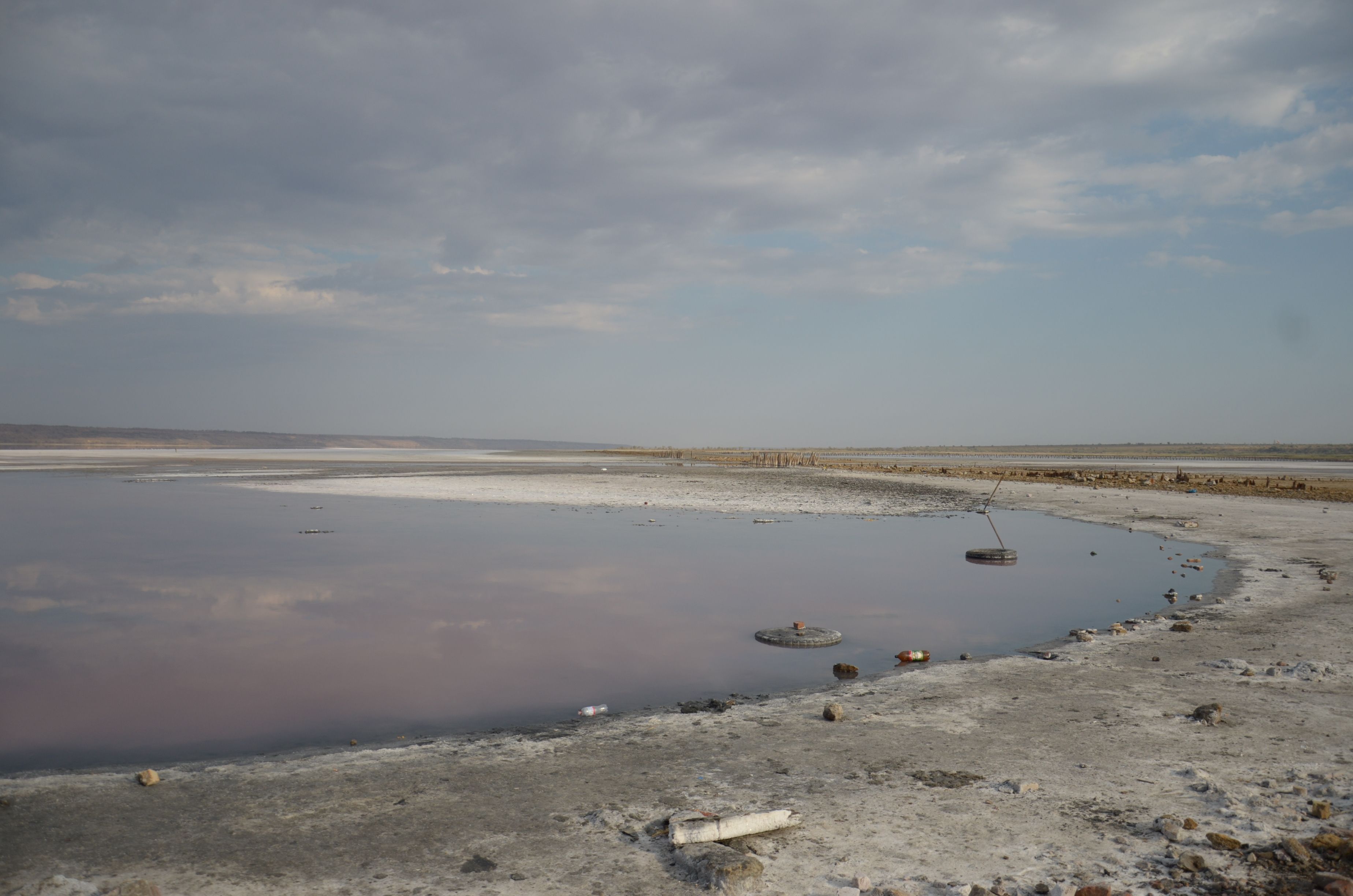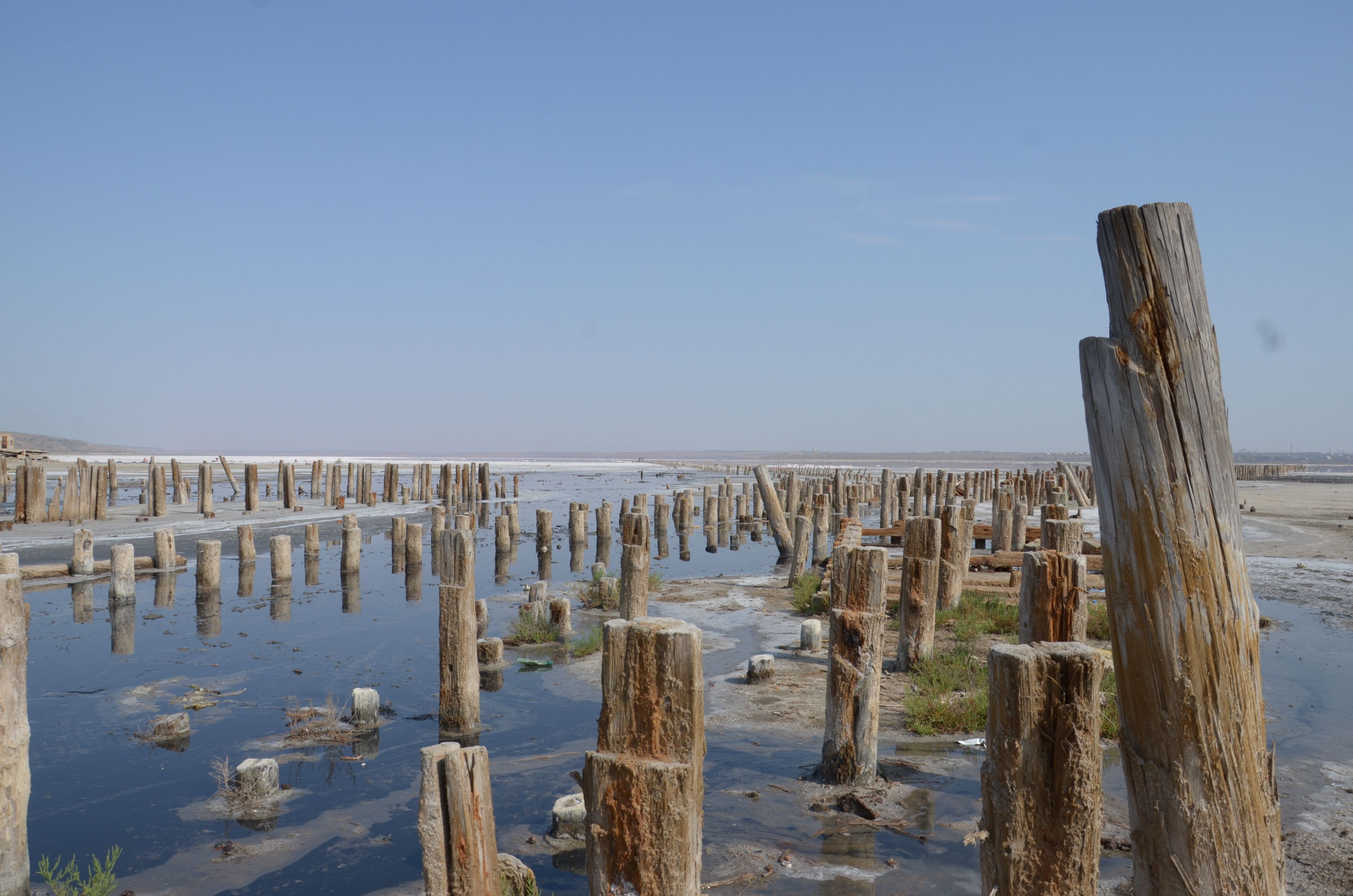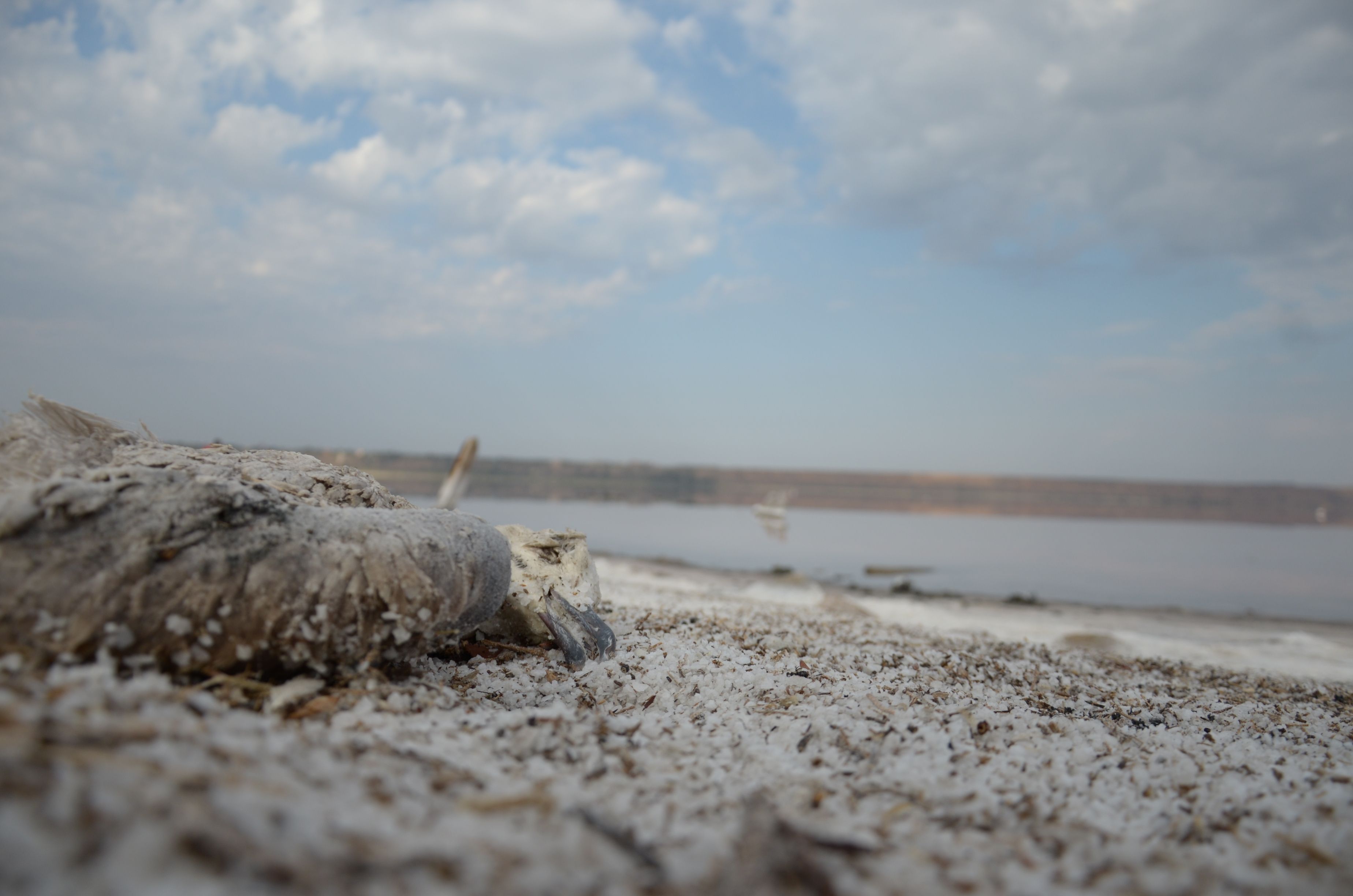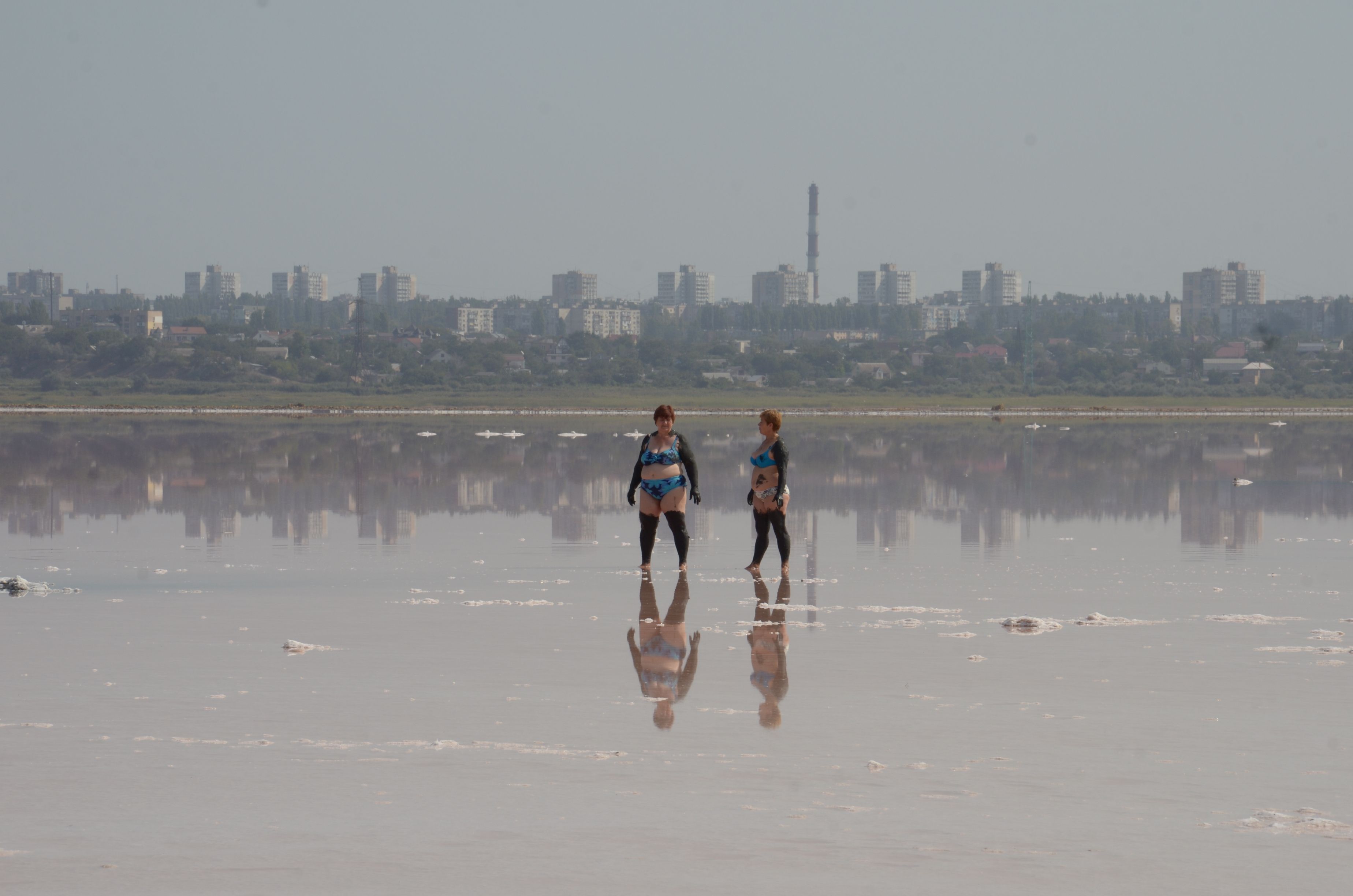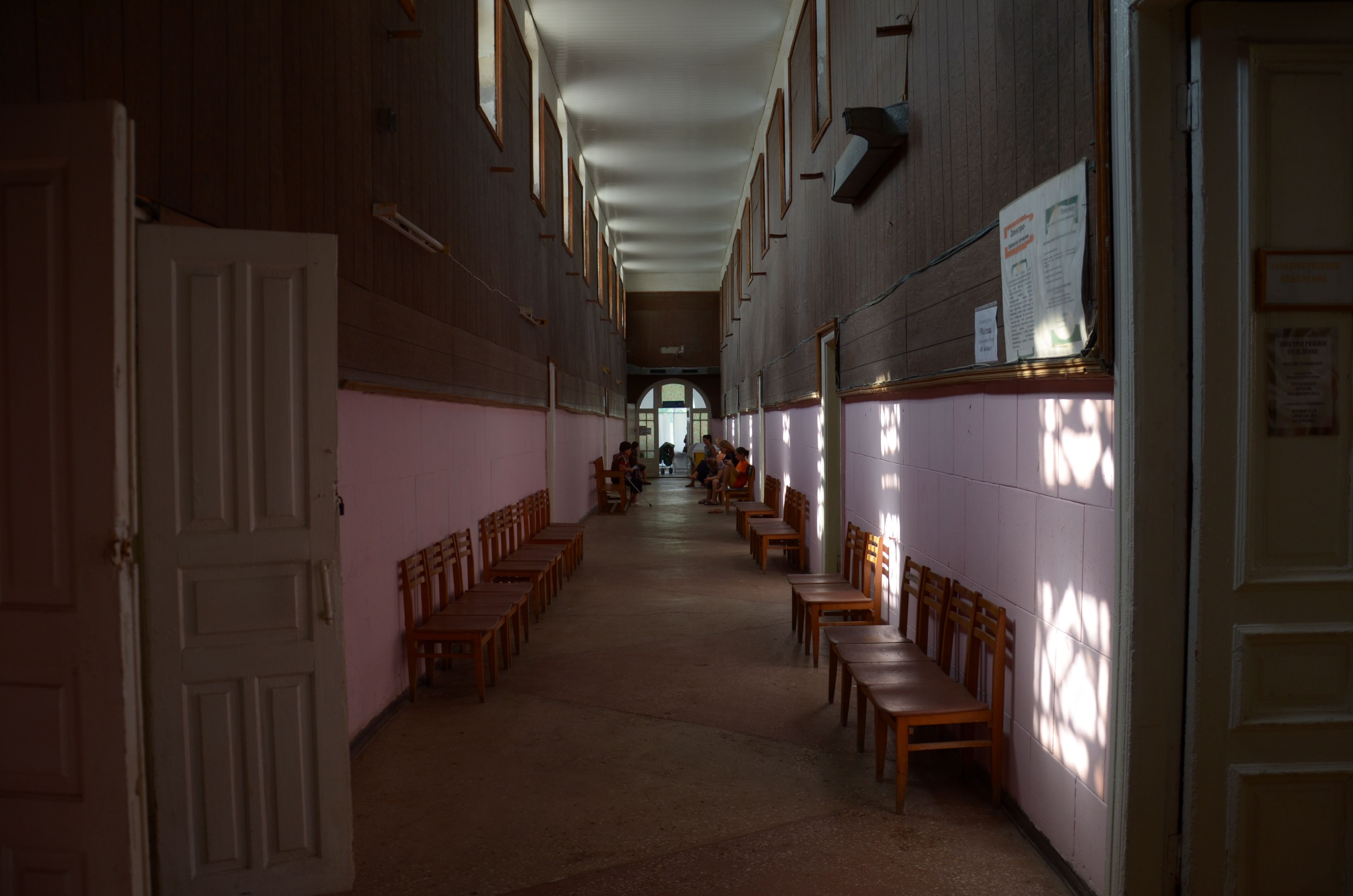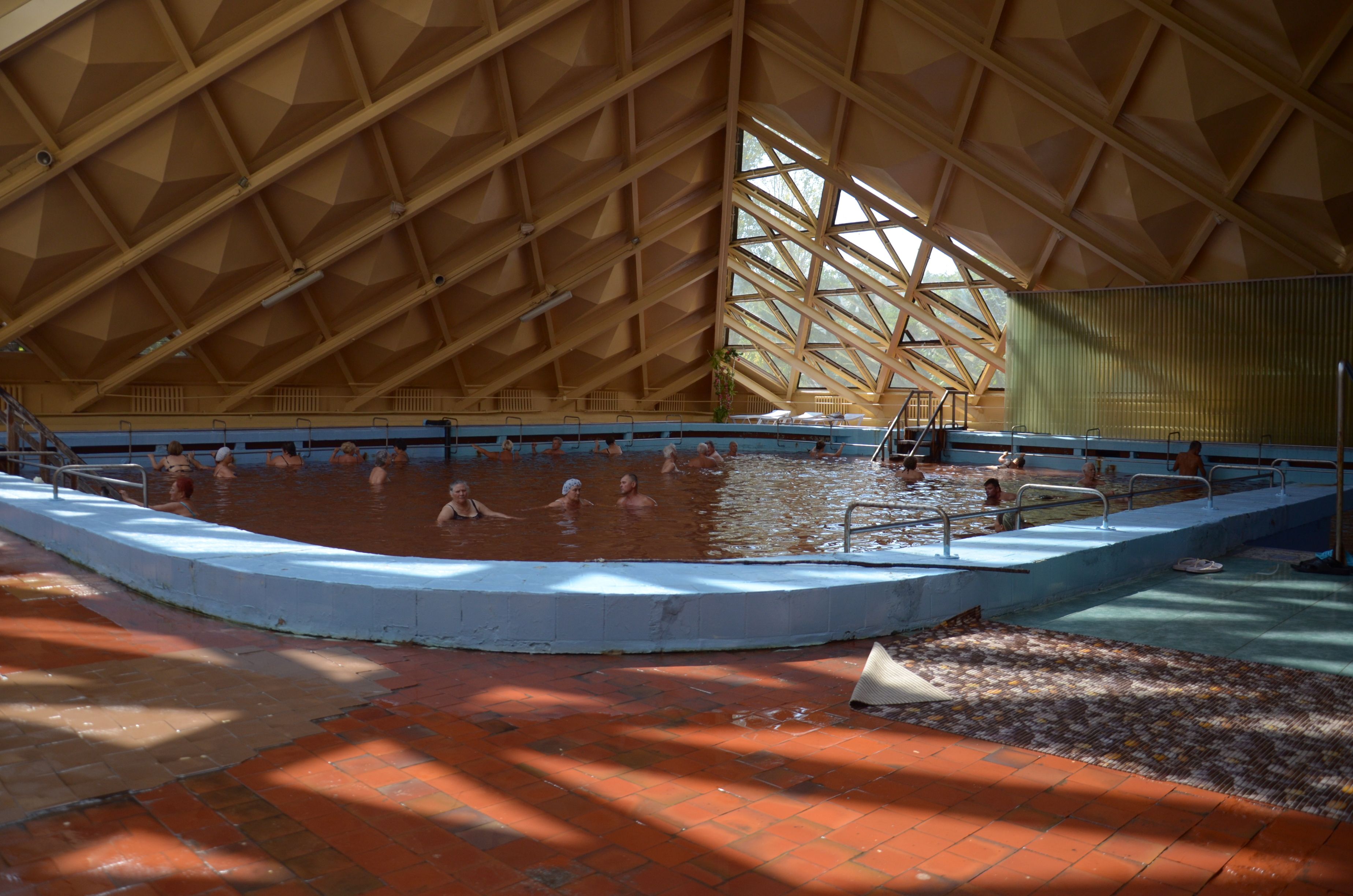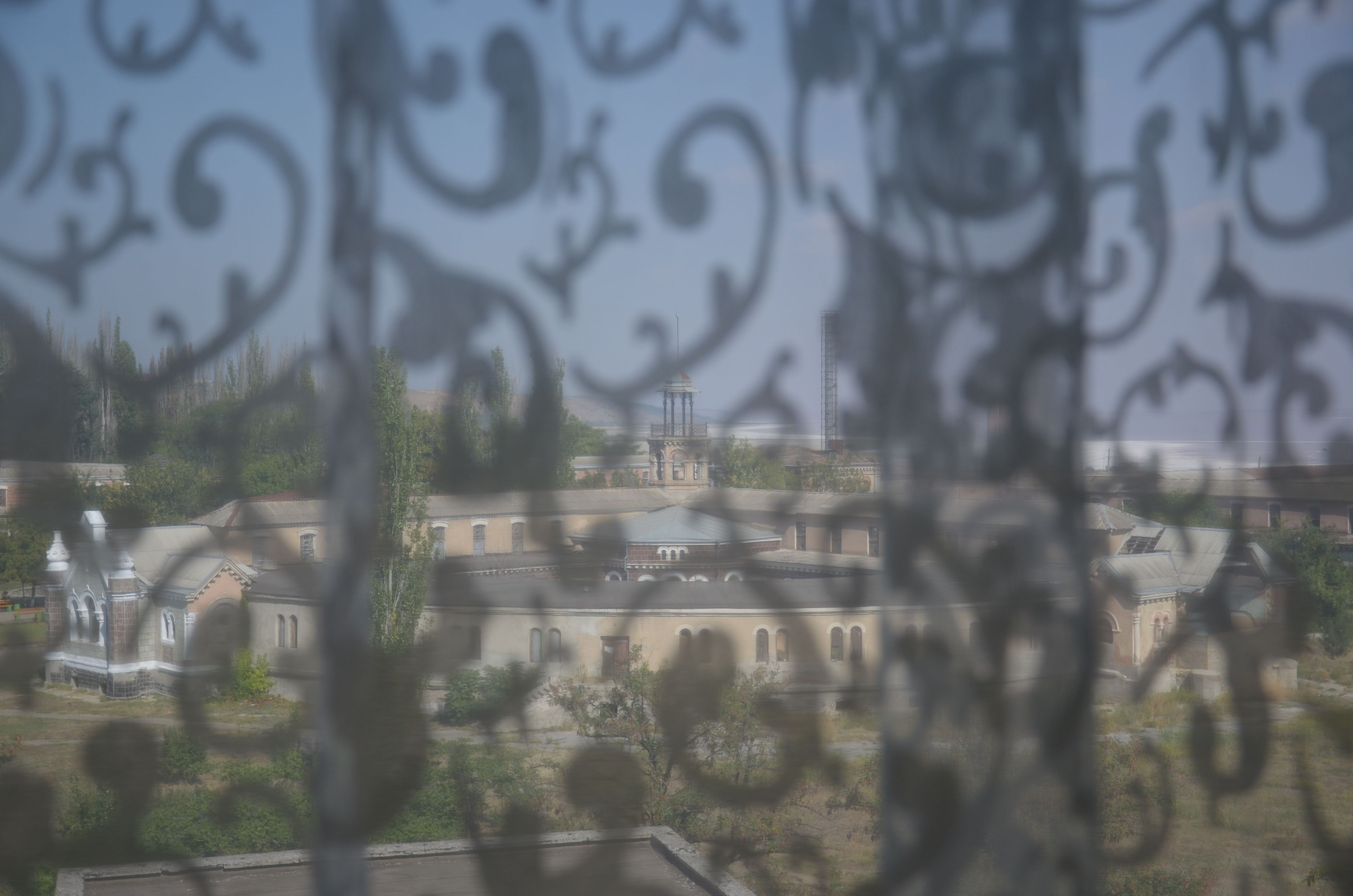Kuyalnik estuary—or liman, as it is commonly known in Russian—is a large brackish lake on the eastern outskirts of Odessa that was once connected to the Black Sea but now exists as its own separate body. For almost 200 years, it has also been the site of an illustrious health spa, Kuyalnik Sanitarium, famous for its medicinal mud and salty water (rapa) throughout the reaches of the Russian Empire, later the Soviet Union and now Ukraine. Each summer, thousands of people from all walks of life come to seek relief for various kinds of ailments: bone and joint pain, skin diseases and gynecological issues.
Some undergo procedures in the pools and bathtubs of the sanitarium, while many others, including Odessa locals, just wallow in the shallows of the lake, smearing black, mineral-rich mud over their hands and legs.
This year everything changed. With almost no precipitation and prolonged spells of heat that many here see as the results of an altering climate, Kuyalnik has lost much of its original volume, exposing to the air large salty areas that were previously hidden underwater. The only river flowing into the lake has nearly dried up because of heavy agricultural use and illegal sand mining.
As a result, Kuyalnik’s salinity has risen drastically, to more than 300 practical salinity units (psu), comparable to that of the Dead Sea, or nearly ten times the average salinity level of the world’s oceans. Many of the organisms that previously thrived there, like the brine shrimp artemia salina, have virtually disappeared, and along with them the tens of thousands of birds for whom the lake was an important food source and nesting haven. Strong winds carry dry salt into nearby farmland, destroying its productivity. Kuyalnik estuary, Ukraine’s lowest point, is eerily empty and silent today.
| Attachment | Size |
|---|---|
| 14.33 KB |
